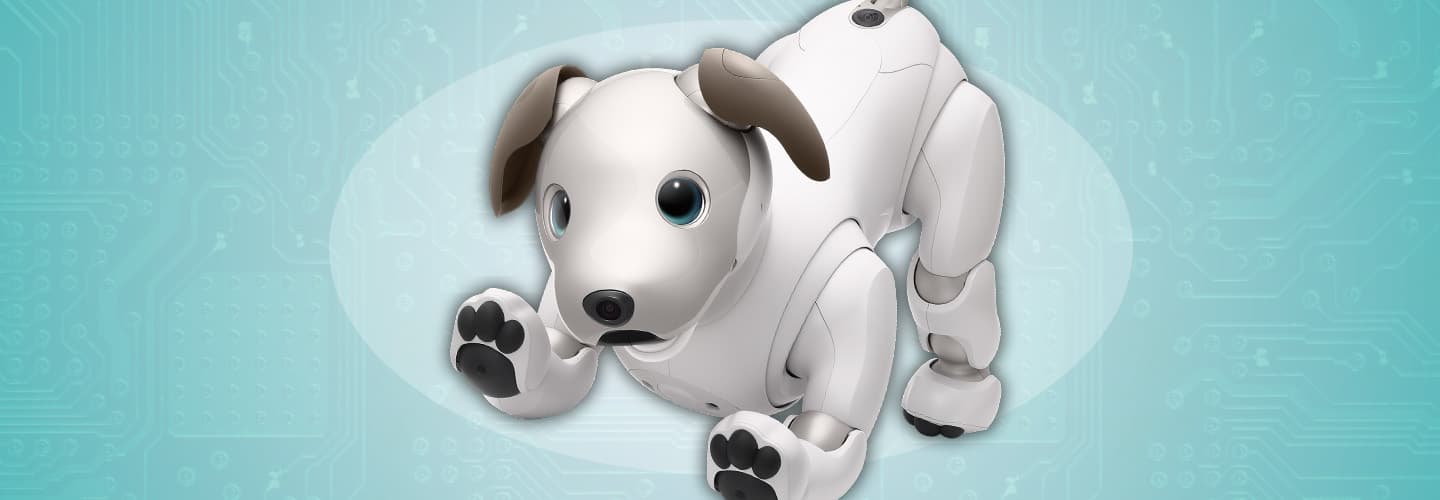Courtesy of family
Sophie Kuperwasser-Gupta with her robot pet Chip
Sophie Kuperwasser-Gupta has had her dog Chip for six years. When the 10-year-old from Massachusetts calls Chip’s name, he responds with an excited bark. Sophie loves playing fetch with Chip and teaching him tricks. When she says “Do yoga,” the dog does a headstand.
That’s not the only thing that makes Chip different from other dogs. He also has wheels instead of paws, doesn’t have fur, and never drools. That’s because Chip is a robot! Sophie is able to control him using voice commands and an app.
“I never get tired of him,” she says. “He always finds ways to amuse me.”
Many robot pets use even more advanced technology than Chip. Some have artificial intelligence (AI). That’s the ability of a machine to think, learn, and act like a human—or a pet.
One of the most popular AI pets is a dog named Aibo, made by Sony. The robot pooch learns new tricks and different behaviors as its owners interact with it. Sony says Aibo also shows emotions and develops a unique personality—just like a real dog would.
Companies that make AI pets claim their robots can bond with people, bringing the same warmth and joy that real animals can. But many people argue that a robot pet could never take the place of the real thing.
Sophie Kuperwasser-Gupta has a dog named Chip. The 10-year-old from Massachusetts has had Chip for six years. When she calls Chip’s name, he responds with an excited bark. Sophie loves playing fetch with Chip. She also likes teaching him tricks. When she says “Do yoga,” the dog does a headstand.
That’s not the only thing that makes Chip different from other dogs. He also has wheels instead of paws. He doesn’t have fur. Plus, he never drools. That’s because Chip is a robot! Sophie uses voice commands and an app to control Chip.
“I never get tired of him,” she says. “He always finds ways to amuse me.”
Many robot pets use even more advanced technology than Chip. Some have artificial intelligence (AI). That’s the ability of a machine to think, learn, and act like a human—or a pet.
One of the most popular AI pets is a dog named Aibo. It is made by Sony. The robot pooch learns different behaviors as its owners interact with it. It also learns new tricks. Sony says Aibo also shows emotions. The company says Aibo develops a unique personality—just like a real dog would.
Companies that make AI pets claim their robots can bond with people. They say the robots can bring the same warmth and joy that real animals can. But many people argue that a machine could never take the place of the real thing.

